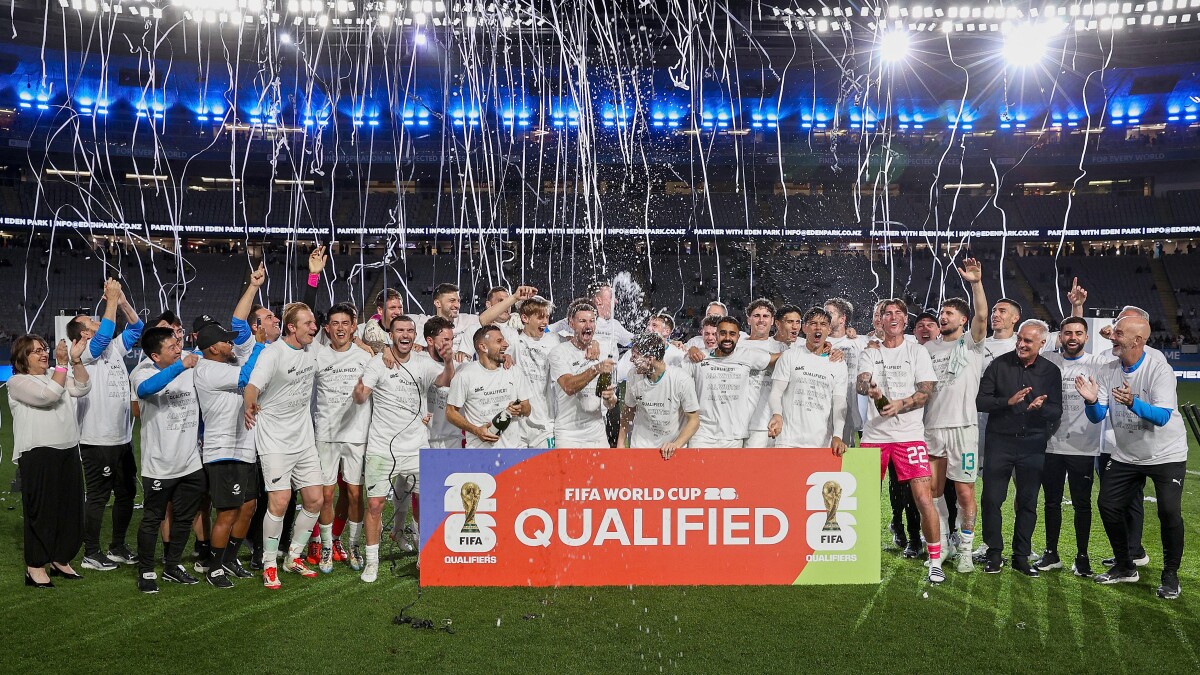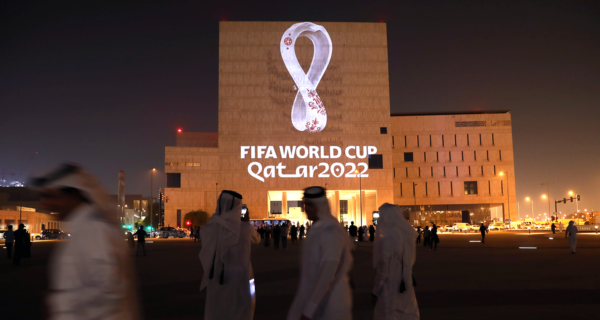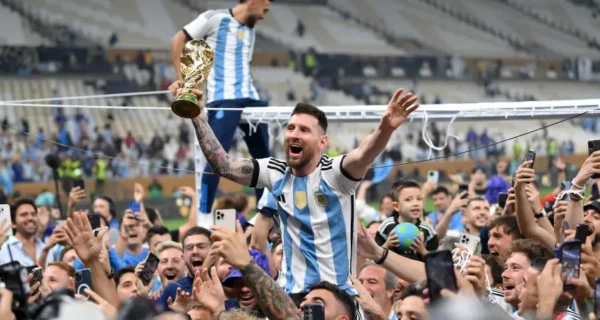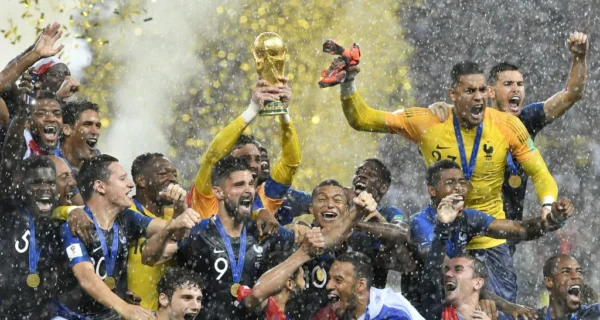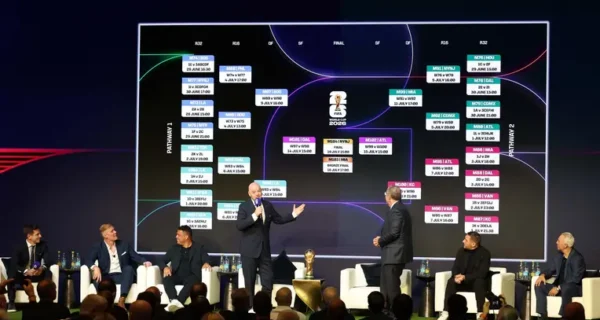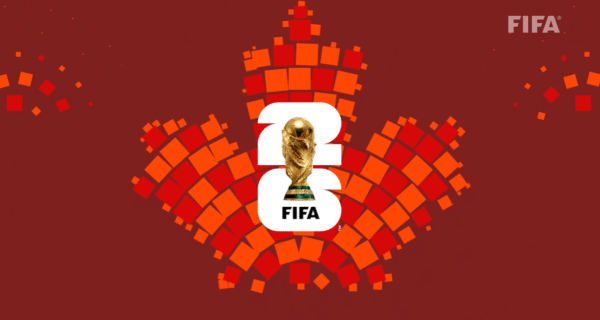The FIFA World Cup qualification process serves as the gateway for national teams to secure their place at soccer’s most prestigious tournament. With the 2026 World Cup expanding to an unprecedented 48 teams, the qualification journey takes on new significance for nations across all six continental confederations.
This comprehensive guide breaks down the qualification formats by region, explains the rules governing the process, and provides up-to-date information on which teams have already booked their tickets to the tournament hosted by the United States, Canada, and Mexico.
The Evolution of World Cup Qualification
The qualification process for the FIFA World Cup has transformed dramatically since its inception. The first World Cup in 1930 featured no qualification process – teams participated by invitation only.
The 1934 FIFA World Cup marked the historic introduction of a formal qualification system, with Sweden defeating Estonia 6-2 on June 11, 1933, in what became the first-ever World Cup qualifying match.
Over the decades, FIFA has steadily expanded the tournament to accommodate more teams. From 1934 to 1978, the World Cup featured 16 teams. This number increased to 24 teams between 1982 and 1994, then to 32 teams from 1998 through 2022.
The upcoming 2026 tournament represents another landmark expansion to 48 teams, significantly altering the qualification landscape across all confederations. This expansion reflects soccer’s growing global popularity and creates new opportunities for nations that previously found qualification nearly impossible.
The qualification process now involves over 200 FIFA member associations, making it truly global in scope and one of the most extensive sporting competitions in the world.
Qualification Structure Overview
FIFA divides the qualification process among six continental confederations, each responsible for organizing its own qualification tournament according to FIFA guidelines:
- AFC (Asian Football Confederation)
- CAF (Confederation of African Football)
- CONCACAF (North, Central America and Caribbean Football Confederation)
- CONMEBOL (South American Football Confederation)
- OFC (Oceania Football Confederation)
- UEFA (Union of European Football Associations)
For the 2026 FIFA World Cup, qualification spots are distributed as follows:
- AFC: 8 direct slots + 1 playoff slot
- CAF: 9 direct slots + 1 playoff slot
- CONCACAF: 3 direct slots (plus 3 host nations) + 2 playoff slots
- CONMEBOL: 6 direct slots + 1 playoff slot
- OFC: 1 direct slot + 1 playoff slot
- UEFA: 16 direct slots
This allocation represents a significant increase in representation for confederations outside Europe and South America, reflecting FIFA’s commitment to global soccer development.
The host nations – United States, Mexico, and Canada – automatically qualify, leaving 45 spots to be determined through continental qualification tournaments.
AFC Qualification (Asia)
Format and Stages
The Asian qualification path for the 2026 World Cup provides Asian nations with their greatest-ever opportunity, offering eight direct qualification spots plus one playoff opportunity. The AFC qualification process consists of five progressive rounds:
- First Round: The 20 lowest-ranked AFC nations competed in two-legged home-and-away matches, with 10 winners advancing.
- Second Round: These 10 winners joined the 26 highest-ranked AFC teams in 9 groups of 4 teams playing home-and-away round-robin matches. The top 2 from each group advanced.
- Third Round: The 18 advancing teams were divided into 3 groups of 6 teams playing home-and-away matches. The top 2 teams from each group automatically qualify for the World Cup, with third and fourth-placed teams advancing to the fourth round.
- Fourth Round: The 6 remaining teams will be divided into two groups of 3 teams playing a single round-robin. The winners qualify directly for the World Cup.
- Fifth Round: The two fourth-round runners-up compete in a two-legged playoff, with the winner advancing to the inter-confederation playoffs.
Current Status
As of April 2025, 2 Asian teams have secured qualification: Japan became the very first team to qualify for the 2026 World Cup on March 20, 2025, by winning Group C in the third round.
Iran followed shortly after by qualifying through their performance in Group A. Other teams like South Korea, Australia, Saudi Arabia, and Qatar remain engaged in fierce competition for the remaining slots.
CAF Qualification (Africa)
Format and Stages
Africa’s qualification system for 2026 grants the confederation 9 direct spots and one playoff opportunity – the most in CAF history. The qualification process consists of 2 straightforward rounds:
- First Round: 9 groups of 6 teams each play home-and-away round-robin matches. The winner of each group automatically qualifies for the World Cup.
- Second Round: The 4 best group runners-up participate in a playoff to determine which team advances to the inter-confederation playoffs.
This more direct approach represents a change from previous complex formats and gives more African nations realistic qualification hopes. The current cycle began in November 2023 and continues through November 2025.
Current Status
CAF qualification has seen some unexpected results already, with traditionally strong nations facing serious challenges. Teams like Poland, Bosnia and Herzegovina, and Finland showing early promise.
The runners-up table currently shows Gabon, Cameroon, Senegal, Namibia, and Comoros among the highest-ranked second-place teams competing for playoff positions.
CONCACAF Qualification (North America)
Format and Stages
With the United States, Mexico, and Canada automatically qualifying as host nations, CONCACAF’s qualification process determines three additional direct spots and two playoff opportunities. The qualification structure consists of three rounds:
- First Round: The 4 lowest-ranked CONCACAF teams competed in two-legged playoffs.
- Second Round: 30 teams (including first-round winners and teams ranked 1-28) were drawn into 6 groups of 5 playing single round-robin matches, with the top 2 from each group advancing.
- Third Round: The 12 advancing teams will be drawn into 3 groups of 4 playing double round-robin matches. The 3 group winners will qualify directly, with the 2 best runners-up advancing to the inter-confederation playoffs.
This format creates opportunities for smaller nations to participate meaningfully in the qualification process, even if their World Cup dreams remain distant.
Current Status
The second round of CONCACAF qualifying is currently underway, with traditional powers like Costa Rica, Jamaica, and Panama competing alongside emerging teams like Curacao and Haiti.
The United States, Mexico, and Canada have already qualified as hosts, allowing them to use this period for developmental purposes and international friendlies.
CONMEBOL Qualification (South America)
Format and Stages
South America maintains its traditional qualification format despite the expanded World Cup. All ten CONMEBOL members compete in a single group, playing home-and-away matches against each other for a total of 18 matches per team.
For 2026, the top 6 teams will qualify directly for the World Cup, while the seventh-placed team advances to the inter-confederation playoffs. This format provides South American teams multiple pathways to qualification while maintaining the intensity of traditional rivalries.
Current Status
CONMEBOL qualification began in September 2023 and continues through September 2025. As of April 2025, Argentina has already secured qualification, becoming the first South American team to book their place at the 2026 tournament.
Ecuador, Uruguay, Brazil, Paraguay, and Colombia occupy strong positions in the standings, with traditional powerhouses like Chile and Peru facing challenges in the lower half of the table.
OFC Qualification (Oceania)
Format and Stages
The 2026 World Cup marks a historic moment for Oceania, as the confederation receives its first-ever direct qualification spot in addition to a playoff opportunity. The OFC qualification involved three rounds:
- First Round: The 4 lowest-ranked OFC teams competed in a knockout format, with Samoa advancing.
- Second Round: Samoa and the seven highest-ranked OFC teams were placed into 2 groups of 4, with the top 2 from each group advancing.
- Third Round: A knockout tournament with semifinals and final determined the qualifier and playoff representative.
Current Status
The OFC qualification process has concluded. New Zealand emerged victorious in the final, becoming the first Oceanian team to qualify directly for a World Cup without needing playoffs. New Caledonia, as runners-up, will represent Oceania in the inter-confederation playoffs.
UEFA Qualification (Europe)
Format and Stages
Europe’s expanded allocation of 16 direct qualification spots reflects the region’s traditional strength in international soccer. UEFA’s qualification process consists of two rounds:
- First Round: 54 teams were divided into 12 groups of 4 or 5 teams each playing home-and-away round-robin matches. The 12 group winners qualify directly for the World Cup.
- Second Round: Playoffs among the 12 group runners-up and 4 best UEFA Nations League group winners who didn’t finish in the top two of their qualifying groups. These 16 teams will compete in four playoff paths, each with single-leg semifinals and finals.
Current Status
European qualification began in March 2025 and continues through November, with playoffs scheduled for March 2026. The expanded allocation means traditional powers like England, France, Germany, Spain, and Italy face less risk of missing out, though competition remains fierce for the direct qualification spots. The group stage has just begun, with all teams having played only a few matches so far.
Qualification Rules and Regulations
Points System and Match Format
Across all confederations, the standard points system applies:
- 3 points for a win
- 1 point for a draw
- 0 points for a loss
Most qualification matches follow the traditional format of 90 minutes of regulation time. In knockout stages, matches tied after two legs go to extra time and potentially penalty shootouts. The away goals rule no longer applies in FIFA competitions, including World Cup qualifying.
Tiebreaker Criteria
FIFA has established standardized tiebreaker criteria for qualification competitions. In round-robin formats, teams tied on points are separated by:
- Greatest goal difference in all group matches
- Most goals scored in all group matches
- Most points obtained in matches between tied teams
- Greatest goal difference in matches between tied teams
- Most goals scored in matches between tied teams
- Most goals scored away from home in matches between tied teams
- Best conduct score (yellow/red card point system)
- Drawing of lots by FIFA
These criteria ensure that groups with tied teams can be resolved fairly and systematically.
Special Circumstances and Suspensions
The qualification process occasionally faces complications from political situations, suspensions, or extraordinary circumstances. For the 2026 cycle:
- Russia remains suspended from FIFA competitions due to the invasion of Ukraine.
- Eritrea withdrew from African qualification before playing any matches.
- Congo was suspended due to government interference in their football federation.
FIFA’s disciplinary committee maintains the authority to issue rulings on such matters, potentially affecting which teams advance through the qualification process.
Current Qualification Status
As of April 2025, seven teams have secured their place at the 2026 FIFA World Cup:
- United States (host)
- Mexico (host)
- Canada (host)
- Japan (AFC)
- New Zealand (OFC)
- Iran (AFC)
- Argentina (CONMEBOL)
The qualification picture continues to evolve across all confederations. In Europe, qualifying has just begun with Poland, Bosnia and Herzegovina, and Finland showing early promise. In South America, Ecuador, Uruguay, Brazil, and Paraguay occupy strong positions behind Argentina.
The AFC third round has progressed significantly, with teams like South Korea, Australia, and Saudi Arabia competing for the remaining direct qualification spots. African qualification remains wide open, with traditional powers like Senegal, Cameroon, and Nigeria working to secure group victories.
FAQs
1. How many teams qualify for the 2026 FIFA World Cup?
A total of 48 teams will participate in the 2026 FIFA World Cup, with 45 teams qualifying through confederation tournaments and 3 teams (USA, Mexico, and Canada) qualifying automatically as hosts.
2. Which teams have already qualified for the 2026 World Cup?
As of April 2025, seven teams have qualified: United States, Mexico, and Canada (as hosts), Japan and Iran from Asia, New Zealand from Oceania, and Argentina from South America.
3. How do the inter-confederation playoffs work?
Six teams from different confederations compete in playoffs to determine the final two World Cup spots, with single-elimination matches played in March 2026, just months before the tournament begins.
4. Why did the World Cup expand to 48 teams?
FIFA expanded the World Cup to increase global participation, provide more opportunities for smaller nations, generate additional revenue, and grow the game in developing soccer regions around the world.
5. What happens if a team withdraws or gets suspended during qualification?
If a team withdraws or gets suspended, FIFA and the relevant confederation determine how to handle their scheduled matches, which may be canceled or awarded as forfeits to opponents.
6. How are teams seeded for World Cup qualification draws?
Teams are typically seeded based on the FIFA World Rankings, with higher-ranked teams placed in different pots to ensure competitive balance across qualification groups.
7. Can a country qualify for the World Cup without playing matches?
Besides host nations who receive automatic qualification, all other countries must compete through their confederation’s qualification process to earn their place at the tournament.
8. How long does the World Cup qualification process take?
The qualification process for the 2026 World Cup spans approximately three years, beginning in September 2023 and concluding with the final inter-confederation playoffs in March 2026.
9. What happens if teams finish with the same number of points in a qualification group?
FIFA applies a series of tiebreakers including goal difference, goals scored, head-to-head results, fair play points, and potentially drawing of lots to separate tied teams.
10. How do the UEFA playoffs work for World Cup qualification?
The UEFA playoffs involve 16 teams competing in four paths of knockout matches, with the four winners qualifying for the World Cup finals as Europe’s final representatives.

